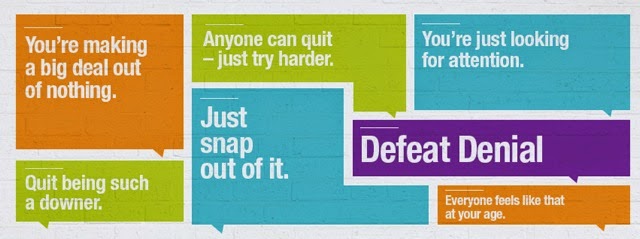1. Faulty brain wiring.When experts scanned the brains of depressed people, they discovered that the frontal lobes of the brain, the part associated with higher cognitive processes, displayed lower activity levels than those in nondepressed patients.
Other brain imaging reveals breakdown in normal patterns of emotional processing that impedes the ability of depressed patients to suppress negative emotional states. High levels of activity in the amygdala part of the brain, the fear center, persisted despite cognitive efforts to retrain the thoughts.
Depression, then, involves a problem in the wiring pattern in the brain: not a single brain activity pattern, but by a brain activity pattern that is unique to each person.
2. Brain atrophy.Depression can be associated with the loss of volume in parts of the brain, namely the hippocampus, which belongs to the limbic system (the emotional center of the brain), and is important in the consolidation of information from short-term memory to long-term memory. The more severe the depression, the greater the loss of brain volume.
The atrophy affects the brain’s frontal lobes, as well, especially the prefrontal cortex, which regulates the emotional centers of the brain. Finally, depression appears to inhibit the birth of new brain cells, or neurogenesis. For this reason, Peter Kramer, M.D. believes that depression is the “most devastating disease known to mankind.”
3. Hormonal imbalances.The endocrine system may also play a role in depression. Some studies have indicated a default in the hypothalamic-pituitary-adrenal (HPA) axis, the region that manages the body’s response to stress. When a person is in distress, the hypothalamus produces corticotropin-releasing factor (CRF) and other substances that stimulate the pituitary gland to release stress hormones that send a flight-or-fight response. Chronic activation of the HPA can contribute to depression.
4. Genetics.There are many genetic variations than can increase a person’s vulnerability to depression and other mood disorders, although some of these variations have yet to be identified. Scientists have identified a gene that may be linked to bipolar disorder, and experts have also found a common genetic mutation associated with a person developing clinical depression when faced with traumatic events in his or her life. A study on twins showed that if one twin developed depression, the other twin also suffered from depression in 46 percent of identical twins, compared with 20 percent of fraternal twins.
5. Brain inflammation.In his bestseller, Grain Brain, renowned neurologist David Perlmutter, M.D. explains that the cornerstone of all degenerative conditions — including depression, anxiety, and bipolar disorder — is inflammation, and the most prominent stimulators of inflammation in our diet are gluten and sugar. We get into trouble because we can’t feel the inflammation in our brain like we can in other parts of the body, so we rarely link a kind of food we eat with our mood. Perlmutter points out that study after study demonstrates that people who suffer from mood disorders also tend to be gluten-sensitive and vice versa: depression is found in as many as 52 percent of gluten-sensitive individuals.
*none of this is in my own words besides the introduction, I posted this simply to refer back to in case my group decides to use some of this information in our documentary*
Source
all this information was taken from:
http://psychcentral.com/blog/archives/2014/10/29/5-new-theories-on-the-cause-of-depression/



